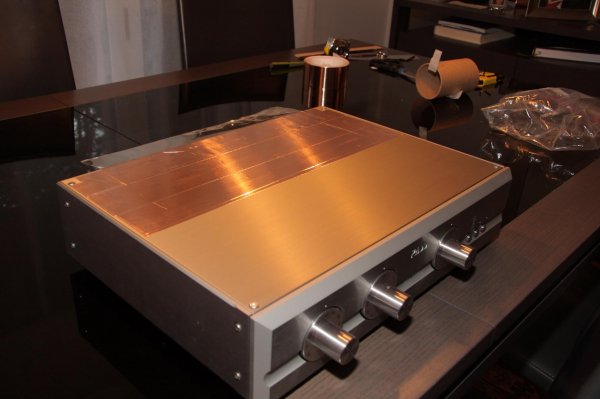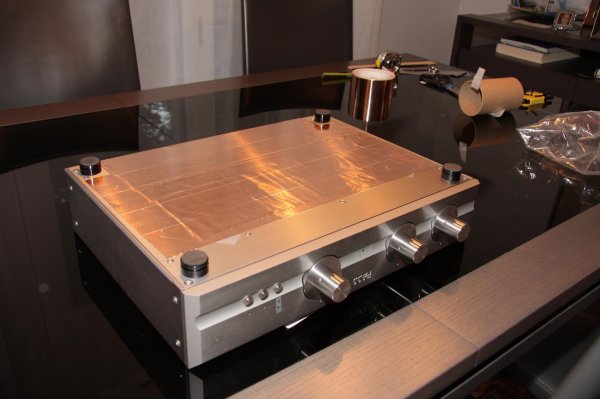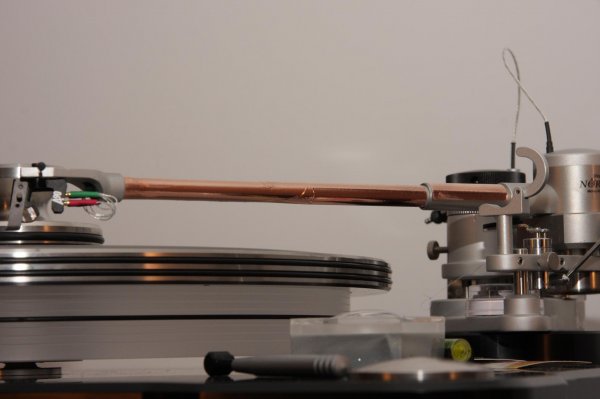Timbre & Articulation - A 35-year journey ends with the Spectral DMA-400RS...
So I think I was 15 years old when I got seriously into this hobby, tinkering with my father's Dual turntable, zapping myself to near death a couple of times while attempting to modify it, then convincing him to buy me an Akai receiver and a Thorens turntable - and modifying the crap out of the latter. My fascination with audio electronics since then - and love for Physics & Electrical Engineering, eventually minoring in them in college - led me to building amplifiers, small mixing consoles, desiging my first speakers using the legendary B110 and T27 KEF drivers (used in the LS3/5A, if I remember correctly) and B139 as a sub (used in the Wilson WAMM)... and the list is too long to mention. Funny thing is all of my original equipment survives to this day - the speakers in my home theater, the Akai in some closet, the Thorens used by my brother.
My foray into the high end probably came some time in the mid '80s, when I bought a 45rpm LP called
Kronos Quartet - In Formation, by an unknown to me label, Reference Recordings. It sounded so different and better than any other LP I've had that it truly captivated me. In the liner notes, thanks were given to Demian Martin and Richard Fryer of Spectral Audio Associates. Who?
It must have been 1994 when I first walked into Goodwin's and ran again into Spectral. Hmmm... I had read a number of things about them by then, but who are they really. Wait a minute, these are the guys that gave themselves a very tough assignment - build fast circuits in order to better track the signal (I think Goldmund and FM Acoustics may have been the other two doing the same, back then). Looking at the circuit boards, the advanced and fanatical build quality was quite evident; photos of their older equipment from the '80s was equally impressive. Hmmm... time to pay close attention.
Fast forward... the DMC-12 preamp was my first Spectral component - I was floored by the sound; quick, get me the DMC-20 Series 2; then pair with the DMA-150, DMA-250 and DMA-360S2's; and along with the DMC-30SL S2 and finally DMC-30SS S2 preamps they have been the equipment of choice the last 20 years or so (with some Pass Aleph in between for a brief period of time, a McCormack DNA-1, and a Krell).
A few years ago I raved here about the 30SS S2, and I have yet to eat my words (but surely will eventually in the future) - to me, this preamp is still just a spectacular engineering feat with a commensurate sound. The story with their amps has been slightly different - a lush but slightly dark presentation, which has always bothered me to one degree or another; great detail and sense of space; great micro and macro dynamics; but some timbres slightly off (even with the latest MIT Matrix cables). Overall, I heard significant improvements over the years, but it was just not enough... Still, their approach had all the hallmarks of success, some day: sensational unfiltered architecture, fanatical build quality (OK let's forget about those silly lamps), non-invasive parallel monitoring circuits, short paths, great parts density, and system-design approach down to factoring in the capacitance of the output terminals and internal cables. Frankly, I am like that in my personal and business life: I will take probably nothing at face value and have to understand as much as possible about a problem before offering solutions (or making purchases).
This being electronics, there is just no free lunch, and I can see the struggle on Spectral's part to improve on their designs. For example, early on I realized that fast circuits introduce their own set of problems, collectively and fuzzily described as distortions of various kinds, not necessarily present in conventional designs - indeed, a tough assignment they gave themselves.
Enter this [post-DMA-300] pair of DMA-400RS...
Judging them by driving Magicos as well as my speakers, and to make a long story short, these are the amplifiers I have been dreaming of since I was a kid - a long 35-year quest to a "marriage" that will probably last a very long time. Others here with more elaborate systems - like marty and coopersark - have described these amps with such eloquence that I don't need to repeat, just summarize my own impressions. What they offer me is, finally, all the treble information, sparkle and brilliance that I have been longing for, a higher bias that results in higher dynamic headroom, gravely-low noise, very high timbral accuracy (the the MITs are an integral part of this), even more resolution, a sensational soundstage (with the MIT Matrix 90.1 at HD for higher transient speed), more taught bass, you-are-there realism, and the entire package offers a great illusion of an unamplified live event (with analog hi-rez digital and HDCD, less so with RBCD). At the bottom of it all, perhaps the most important strength is their lack of distortions of any kind, but then again, I've had them for just over 6 weeks. If there are any distortions, I would be inclined to say they are probably unrelated to the amplifiers; certainly, in my system, some notes here and there are still a little bit off.
To claim that these amps are a breakthrough is probably an understatement, but I am biased so take with a grain of salt

The reality, though, is that I have never been so excited about a piece of audio electronics. My understanding is that they sit on the bench for two weeks, adjusted with trimmers in various places as they break in, then finally appropriate resistors are soldered in place, and there may be other such fanatical adjustments taking place - truly custom built by hand. Their performance and specs are so close to the exceptionally fast and transparent-to-sources 30SS S2, that it's hard to ignore these attributes in a ultra high-speed, high-current, high-powered amplifier design. Spectral claim parts-per-million accuracy in tracking the signal from input to output (well, frankly, I am almost certain that was the original wording in their bulletin when I read it more than a year ago, since then allegedly revised to say "from point A to point B of a musical event with exactly the same waveform shape as its input signal") with no "memorialized unnatural artifacts either before or after the input event", and I believe them.
A word on grounding; there is an internal two-position switch on the driver board, with position 1 intended for lifting the amps' ground I think; this is where I left it, and used cheater plugs on the Shunyata power cords (will soon do something better, like wrap the ground prong); star-grounding is then via the preamp; I have also lifted the ground on my DAC and that made a huge difference (this proved better than using a Shunyata digital Alpha power cord). Speaking of Shunyata, I am not convinced that the Zitron Alpha power cords will be better than my CX, simply because the CX were measured to deliver 200A in ~10us in this audiobeat article
http://www.theaudiobeat.com/visits/shunyata_visit_interview.htm and the Alpha cords claim a rise time of something like 800ms for the same amount of current on their web site
http://shunyata.com/index.php/power-cables-footer/84-alpha-pwr-cables/307-cobra-digital-4#!alphahc (again, no free lunch in electronics).
So if I were to pick one word to describe the 400s' sound, it would be 'natural'. But if I could pick just a few, they would be 'complete' and 'transparent-to-sources' save for ultimate power handling. Hyperbole perhaps, from a pair of flawed ears... Frankly, if we humans are naturally flawed by design, I cannot imagine any of the things we make to be perfect either (just highly accurate; see atomic clocks).
High end audio is a beautiful and gratifying (but expensive) journey. While that journey continues for consumers and manufacturers alike, these amplifiers are to me a major milestone worthy of a round of applause for the hard work, ingenuity, mind brilliance, couriage, exhaustive R&D, perseverence, and pathos & dedication that has apparently gone into them; and of course the sound (or lack of an inherent sound character)! Too bad not too many people have access to Spectral and in particular these Reference Standard products (available at only 3 dealers here in the US, at this point).
(BTW, these amps do warm up very quickly due to the new(?) output-section bias servos utilized; and run hotter than the 360S2's due to the Class A driver section and higher bias output section). Earlier comments can be found here
http://www.whatsbestforum.com/showthread.php?10035-First-thoughts-on-the-DMA-400
More than ever, I am looking forward to next season's BSO performances, led by Andris Nelsons. A couple of live broadcasts I heard on the radio from their summer home, Tanglewood, expectations are very high. So here he is from next season's brochure, coincidentally standing in my favorite seat at Syphony Hall, 2nd balcony C20






